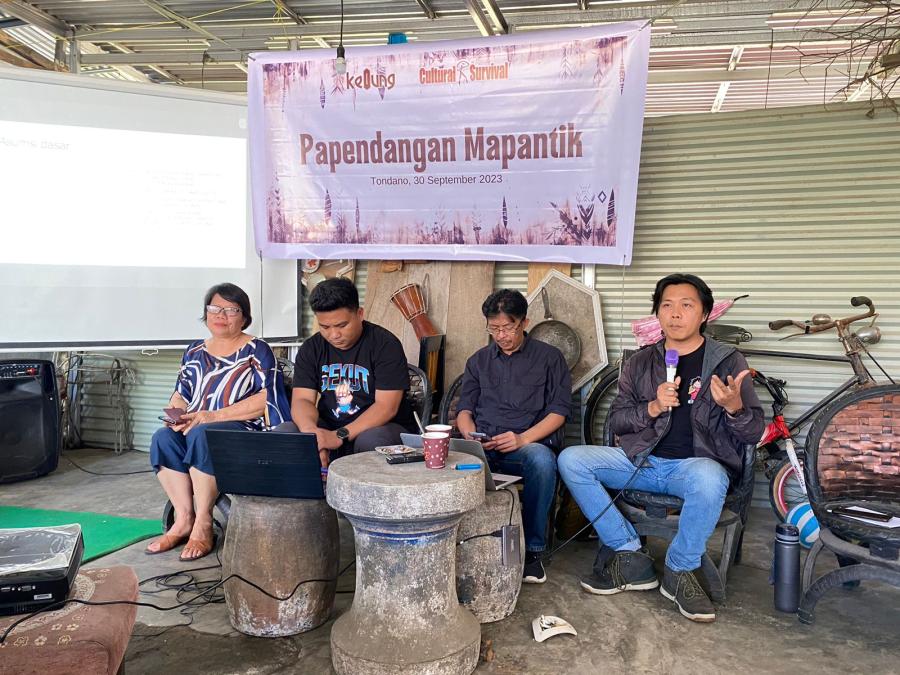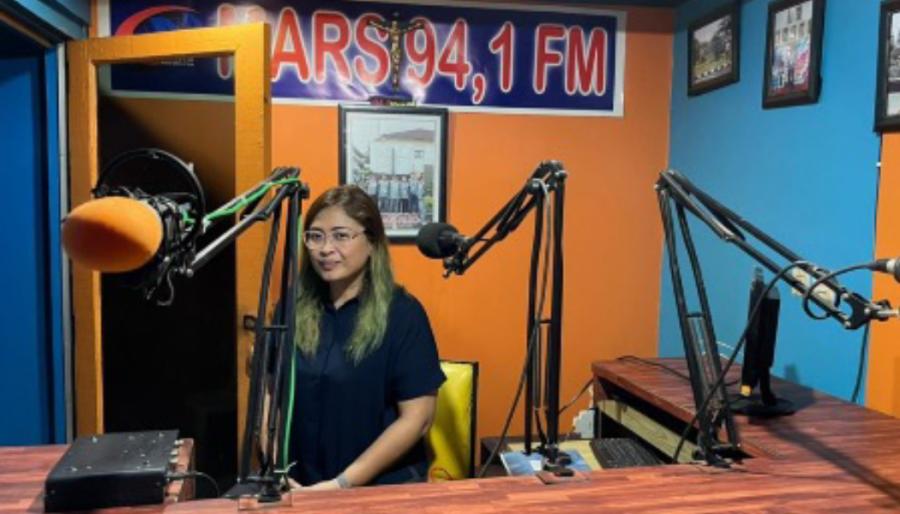Two big news items in the campaign to hold Newmont Mining Corporation accountable for environmental and health impacts of its Minahasa Raya mine in North Sulawesi, Indonesia
1—The company admitted today that its Minahasa Raya mine in Indonesia released 17 tons of mercury into the air – and 16 tons of the toxic chemical into the sea – over a four-year period. Newmont claims that it operated within Indonesian law and that the mercury had no effect on the health of people in nearby villages. Scientists are already contradicting Newmont, and the story is getting increasing attention in the U.S. media. See the Rocky Mountain News report (below)
2—Newmont filed lawsuits against three environmental activists in Indonesia, including marine biologist Dr. Rignolda Djamaludin, who has dedicated the resources of his Manado-based NGO to helping the communities affected by Newmont's Minahasa Raya mine. According to the Denver Post (see below), Newmont is suing Dr. Rignolda for .5 million, charging him with making false accusations against the company. Global Response worked closely with Dr. Rignolda to arrange for a September meeting between Newmont executives and the Buyat Bay community. We have asked Newmont to drop all charges against Dr. Rignolda, and we await the company’s response
_______________________________________________________________________________________________
Article Published: Thursday, December 23, 2004
Newmont admits releases of mercury
By Michael Casey
The Associated Press
Jakarta, Indonesia - Denver-based Newmont Mining Corp. admitted Wednesday that it released tons of mercury into the air and water over a period of years at one of its Indonesian gold mines but denied that it had any health impact on people.
The acknowledgment by Newmont is the latest setback for the company in its six-month battle to defend against pollution allegations. Indonesian police have accused its local subsidiary, Newmont Minahasa Raya, of dumping heavy metals into Buyat Bay, causing residents to develop skin diseases and tumors.
In a statement faxed to The Associated Press, the Denver-based company insisted that it had adhered to all "appropriate standards" and that at no time "did any test or monitoring data show that there were health impacts to employees or the community as a result of operations."
Company spokesman Doug Hock said the mine released 17 tons of mercury into the air over five years and 16 tons into the water.
"The government was aware that there was mercury being released from the plant," Hock said from Denver. "This is not news. It is not a surprise to anyone."
Newmont was responding to an article in The New York Times saying that an internal report from 2001 warned that the mine at Buyat Bay on Sulawesi island was putting tons of toxic mercury into the environment. The internal report also said the company wasn't abiding by its public claims that it was upholding U.S. environmental standards, the Times said.
Indonesia plans to put on trial next month five Newmont executives - an American, an Australian and three Indonesians - accusing them of corporate crimes in connection with the pollution.
If found guilty, they could face up to 15 years in jail.
Villagers have also filed a 3 million lawsuit against the company, and environmentalists have talked of filing additional litigation.
In its statement Wednesday, the company said it had installed mercury scrubbers to minimize emissions. It acknowledged the scrubbers "did experience some operations issues" but that emissions from the plant "at no time endangered human health or the environment."
_______________________________________________________________________________________________
Article Published: Thursday, December 23, 2004
Mining firm sues three activists
By Greg Griffin
Denver Post Staff Writer
Newmont Mining Corp. is suing three environmental activists in Indonesia, claiming they falsely accused the company's gold mining operations there of causing disease and death.
Newmont sued two of the activists in Indonesian court in November and another on Tuesday, company spokesman Doug Hock said.
The company first filed official warnings that demanded public apologies from the three, Hock said, and sued them after they did not reply.
"The suits were filed based on egregious public statements accusing us of killing people and causing Minamata disease," Hock said, referring to a sickness related to mercury poisoning.
One of those sued, Rignolda Djamaludin, a biologist and leader of an Indonesian environmental group, said Newmont seeks .5 million in damages.
Rignolda told an Indonesian newspaper reporter in July that 100 people from a fishing village on Buyat Bay near Newmont's Minahasa mine on the island of Sulawesi had signs of Minamata disease. He also said a 5- month-old baby from the village died from heavy-metal poisoning.
That and similar allegations against Newmont set off a firestorm of criticism of the Denver company throughout Indonesia and in the U.S.
In September, a World Health Organization study of the bay found normal levels of mercury and no evidence of Minamata disease among local residents. Later, a study by the Indonesian government confirmed that result but found high levels of mercury and arsenic in sediment on the bay's floor.
Newmont dumped about 5 million tons of waste from the mine into the bay between 1996 and August, when the mine closed. The company says it had the proper permits from the Indonesian government, and that the waste did not pollute the bay's waters.
On Wednesday, Newmont acknowledged it discharged 33 tons of mercury into the air and water from Minahasa in a four- year period, but said that did not have any health impact.
Indonesia plans to charge Newmont and several executives with criminal offenses related to the alleged pollution next month.
Also on Wednesday, Rignolda acknowledged that the WHO and government studies ruled out Minamata disease as the illness affecting the villagers. But he said he still believes Newmont contaminated the bay.
Another activist being sued is Yani Sagaroa, who has blamed Newmont for causing disease among residents near the company's Batu Hijau mine on Sumbawa island.
The identity of the third person is unclear. Rignolda said it is Dr. Jane Pangemanan, a physician near Buyat Bay who blamed Newmont for causing Minamata disease and helped villagers file a 3 million lawsuit against the company.
Hock said any money gained through Newmont's lawsuits would be donated to communities near Buyat Bay.



